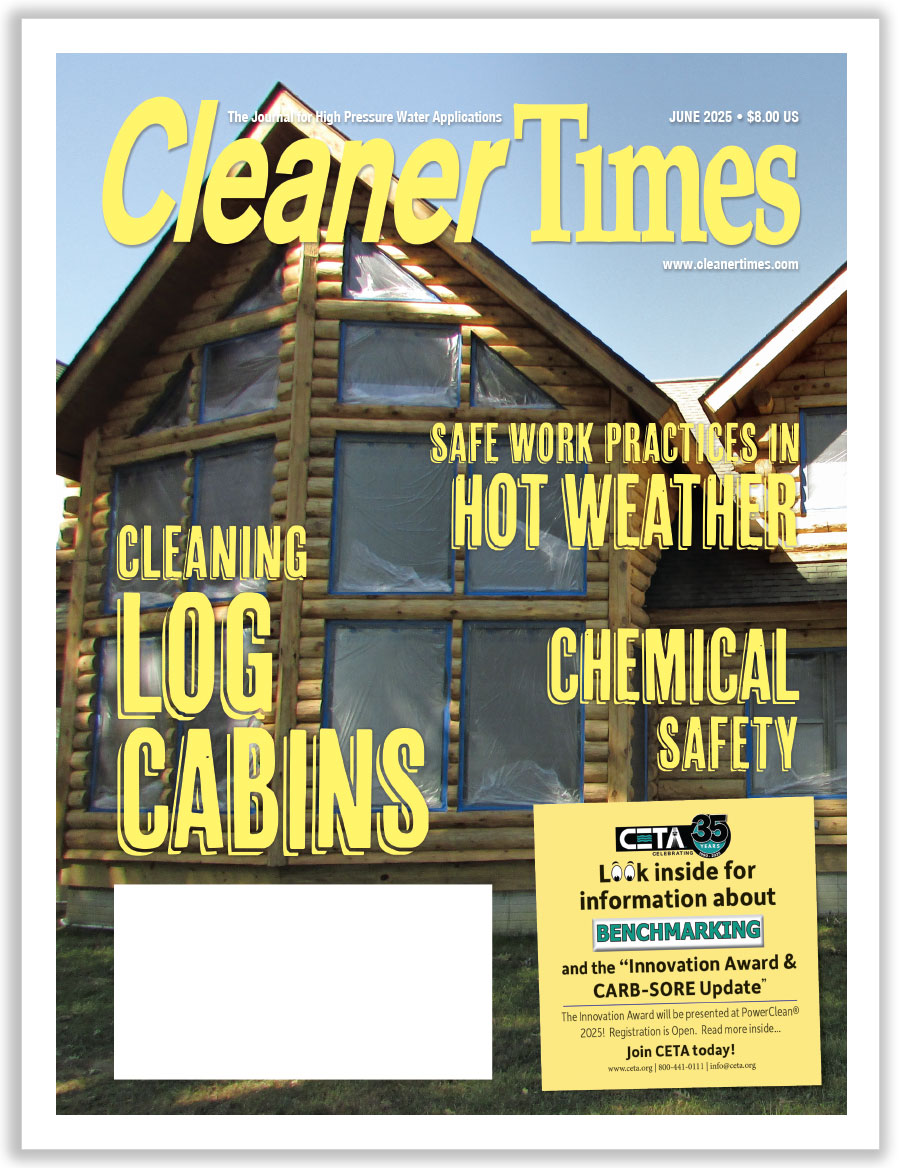
Customer Service and Social/Digital Media
By Diane M. Calabrese / Published May 2021

Have you ever been caught in a loop with a “customer service” bot? It’s enough to make even a computer manufacturer’s representative lose his temper.
Yes, computer user and computer manufacturer’s representative were both caught in ISP’s bot vortex. It occurred for many hours across a four-day span before things could be set straight.
The ISP bot had a script, and our problem deviated from it. Only when an actual person could be reached by phone was what should have been a minor problem resolved.
Digital communication speeds and simplifies. Except when it doesn’t. Social media promote connections. Except when ill-advised words fray links.
How can contractors, distributors, and manufacturers use social/digital communication to enhance customer service (and grow their customer base)—and avoid the pitfalls? Focus on maximizing the upside and minimizing the downside. There’s a lot to be gained, after all.
“For us, social media has opened the door to a whole new group of potential customers,” says Brian Carter, president of Armstrong-Clark Company in Sonora, CA.
“Facebook has been particularly good for fielding questions about our product, how to use it, and where to buy it. Instagram has been great for brand awareness and growing a customer base interested in our product line.”
There are sometimes issues that customers have, and they may post on the forum on a company’s website. If they pose a question, it can be answered. It can all be very useful, especially because another customer may have the same question.
Polite questions and concerns posted. Answers given. It’s a give and take that benefits all engaged in the conversation.
Then, there’s the separate issue of negative reviews by customers. Most of the time, they do not pose
a problem. “Negative reviews are usually dealt with in a simple Q&A, which resolves itself,” says Carter. “The bigger challenge is the trolls that are out there saying negative, and sometimes ugly, things about any product on the internet.” It’s best to ignore them and carry on.
“We no longer respond to trolls as it usually just escalates…,” says Carter. He adds they may post some ugly, even vulgar and pro-fane, statements. “We do not delete their messages because they get notified, and they find other avenues to post. Now, we just hide their comments.”
The virtual world is no different from the in-person world. For whatever reason, there will always be a few individuals who try to stir up trouble. It’s impossible to know why.
Yet any opening for customer comments will bring forth individuals who want to provoke. It’s a reality, like playground pot-stirrers we all learned to ignore.
With so many paths for communicating with customers via social media—Facebook, LinkedIn, Instagram, Twitter, YouTube, for example—choosing among them becomes a task in itself. Balance—or help—might be needed.
“Social media takes quite a bit of effort,” says Carter. “We pay a team to manage it for us.”
Optimal use of social media and digital communication begins with making decisions about goals. An established manufacturer with a robust customer base has a perspective that differs from a contractor new to the industry.
For instance, many manufacturers have been thinking in terms of what they can do to make the life of their customers easier. They post technical manuals online and offer blog posts that answer common questions. They also provide extensive information on each product in the online catalog.
On a parallel track, distributors with a strong client base may use email to remind customers when service on a machine is due. To the reminder, they might attach a tagline about a new product.
A contractor trying to fledge a business must be careful about the use of time—and money. He or she may benefit from advice from someone like Jason Geiman, who with his wife, Jodi, owned and operated a pressure washing business for six years. The business became very successful and was sold in 2018.
Since 2018, Geiman has been at the helm of Geiman Marketing LLC in Burlington, KY. Today, he offers courses not only in techniques for cleaning with pressure washers but also in social media marketing. He also offers one-on-one coaching. (See https://www.pressurewashhelp.com.)
“LinkedIn is an awesome way to grow your commercial pressure washing business,” says Geiman. “But you have to use it as a networking platform and not a spam fest. You can find property managers and connect with them.”
As for negative reviews, Geiman advises turning them to an advantage. “If you screwed up, then say that and tell what you did to fix the problem. This is turning lemons to lemonade.”
Geiman recommends one easy way to prevent social media connections from consuming too much time. “Turn off notifications on your phone.” When they are on, they extract an inordinate amount of time.
Less May Be More
Large manufacturers may have the resources to use multiple social media sites to their advantage. For smaller companies that are making, distributing, or using the tools of our industry, too many connections can distract from the business itself.
There’s another issue: social media cyber-vandalism. The more channels a company is using, the more entry ways for criminals.
The sophistication of cyber vandals grows each day. In January, LinkedIn had a phishing attack that pulled in many users. Last year, the platform ranked first in number of attacks during the third quarter. The short of it: cyber vandals attack even the best-fortified sites.
It’s never entirely safe to click on third-party links—some of which are used to insert malicious code that can lead to password theft—even from someone within a user’s social media community. It’s definitely not safe if the sender of an email is unknown to the recipient, same community or not.
Facebook, LinkedIn, Instagram, Twitter, Google, and Hootsuite all offer tips about safe use. Some have more features than others. Facebook, for instance, has security checks that include approvals, notifications, trusted contacts, and more. Read and follow all guidance.
Readers who do not know about the Digital.gov website should. Although the site is directed at federal entities—agencies and contractors—anyone can use it as a source of valuable and cost-free information about digital communication.
The section on design principles at Digital.gov is a good place to begin. (See https://designsystem.digital.gov/design-principles.) It reminds digital-world entrants that to reach an audience and receive a positive response, the audience must be understood.
A contractor may have a cute video about the customer’s cat that sat on a fence and “watched” a deck being washed. But should it be posted on YouTube? Or does a viewer want to see before, in-between, and after images of the deck? Not all customers like cats, and some might see a focus on “cute” as an indication of a lack of professionalism.
It all depends. Know the audience. Structure content so that it will satisfy most of the audience. (Perhaps the audience does want to see the cat.)
Beyond deciding which media channels to use and the sort of content that will strengthen ties to customers, there are two other giant concerns. Any platform being used must be both accessible and reliable.
Accessibility encompasses every-thing from the way a user can navigate the site (i.e., don’t forget about keyboard navigators just yet) and good content to the way a prospective customer can get in touch. Be sure that security barriers do not become barriers to customer requests for service (e.g., not everyone has the patience for deciding whether there are cars or cows in a picture).
The more varied the devices a customer can use to access information about a company, the better, but disruptions to connections must be rare to none. A plan for testing connections should be in place. Don’t wait for a customer to tell you that your website disappeared or that they could not find your feed on Twitter.
A tweet may be a good way to call attention to a new service. It can also herald an interesting news or magazine article about a company, thereby kindling interest. But to reach existing customers with news of a special sale, a directed email message might be better. Facebook can be a good way to collaborate with colleagues and competitors to discuss common concerns.
Of course, every company and person will get pulled into social media. Google and other search engines comb through public records, registrations, and places that mention the company or person. If there’s a mention on a blog or Facebook page or anywhere, it’s likely to churn up.
In other words, there’s only so much of a digital-world presence that can be controlled. A website is the one place where control should be tight. Include scope of business, services and products, certifications, professional memberships—and do so in the pithiest possible way. Verify all information, including phone number.
In the last few years, many companies have begun to omit their real-world address from websites. It’s a puzzling approach because it can leave visitors feeling unmoored—much like trying to chat with a bot. The goal is to tie the benefits of electronic communication to the real world customers live in.






